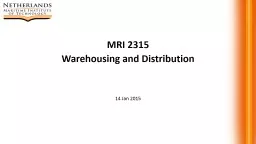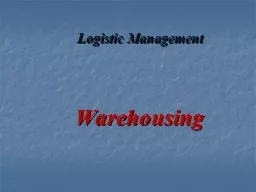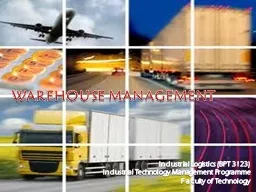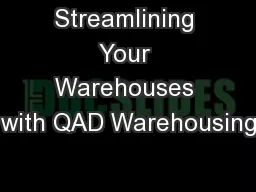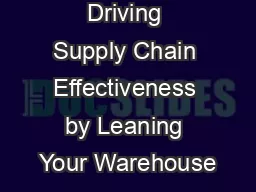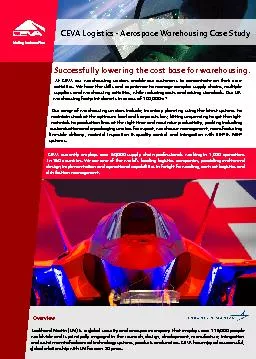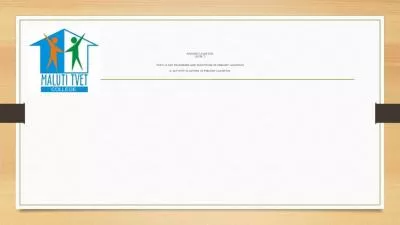PPT-MRI 2315 Warehousing
Author : giovanna-bartolotta | Published Date : 2018-11-09
and Distribution 18 Jan 2016 TH So Topics 1 Material handling systems and their objectives 4L 2T 13SDL 11 Overview of the various types of automated and nonautomated
Presentation Embed Code
Download Presentation
Download Presentation The PPT/PDF document "MRI 2315 Warehousing" is the property of its rightful owner. Permission is granted to download and print the materials on this website for personal, non-commercial use only, and to display it on your personal computer provided you do not modify the materials and that you retain all copyright notices contained in the materials. By downloading content from our website, you accept the terms of this agreement.
MRI 2315 Warehousing: Transcript
Download Rules Of Document
"MRI 2315 Warehousing"The content belongs to its owner. You may download and print it for personal use, without modification, and keep all copyright notices. By downloading, you agree to these terms.
Related Documents

